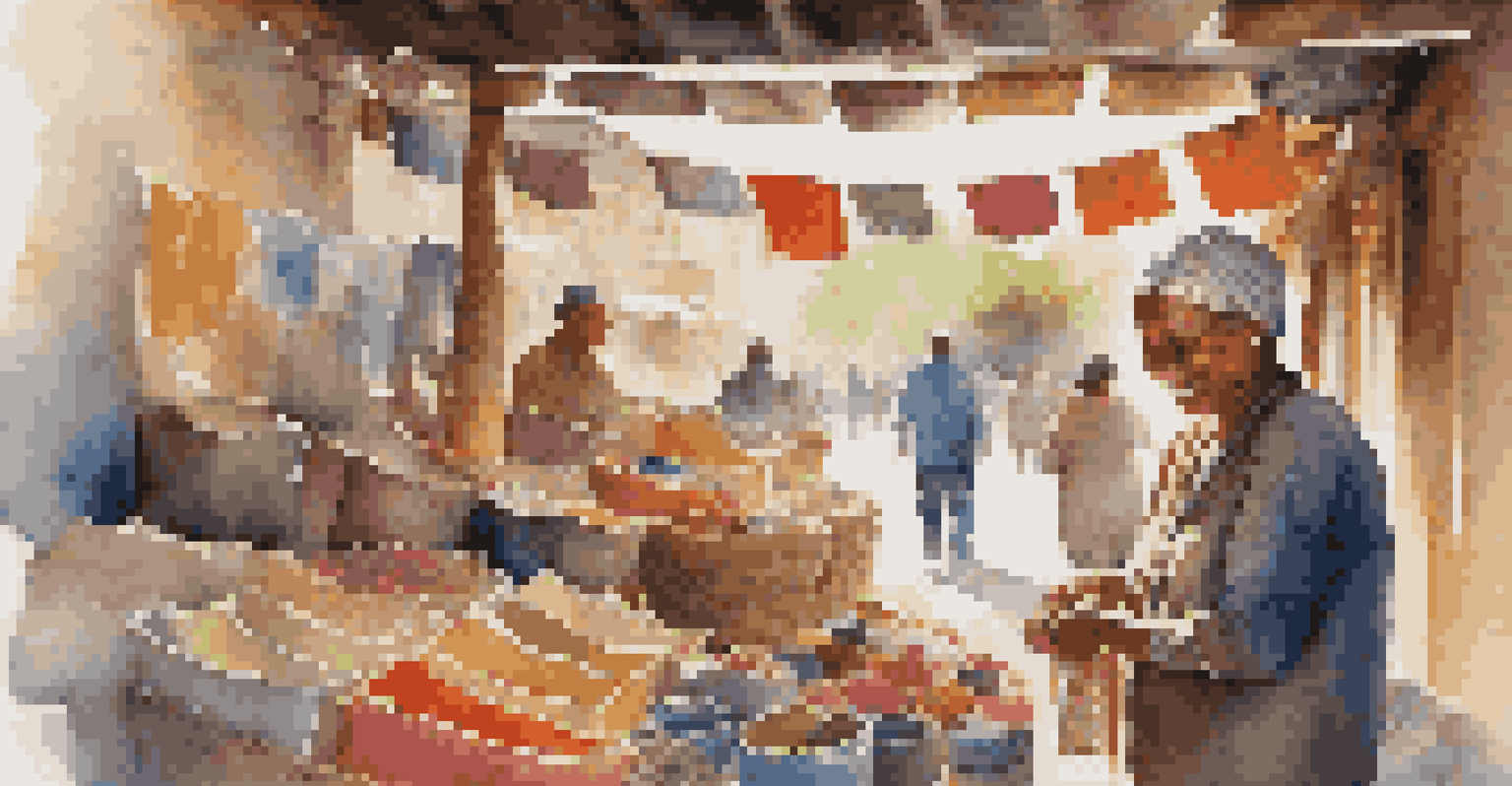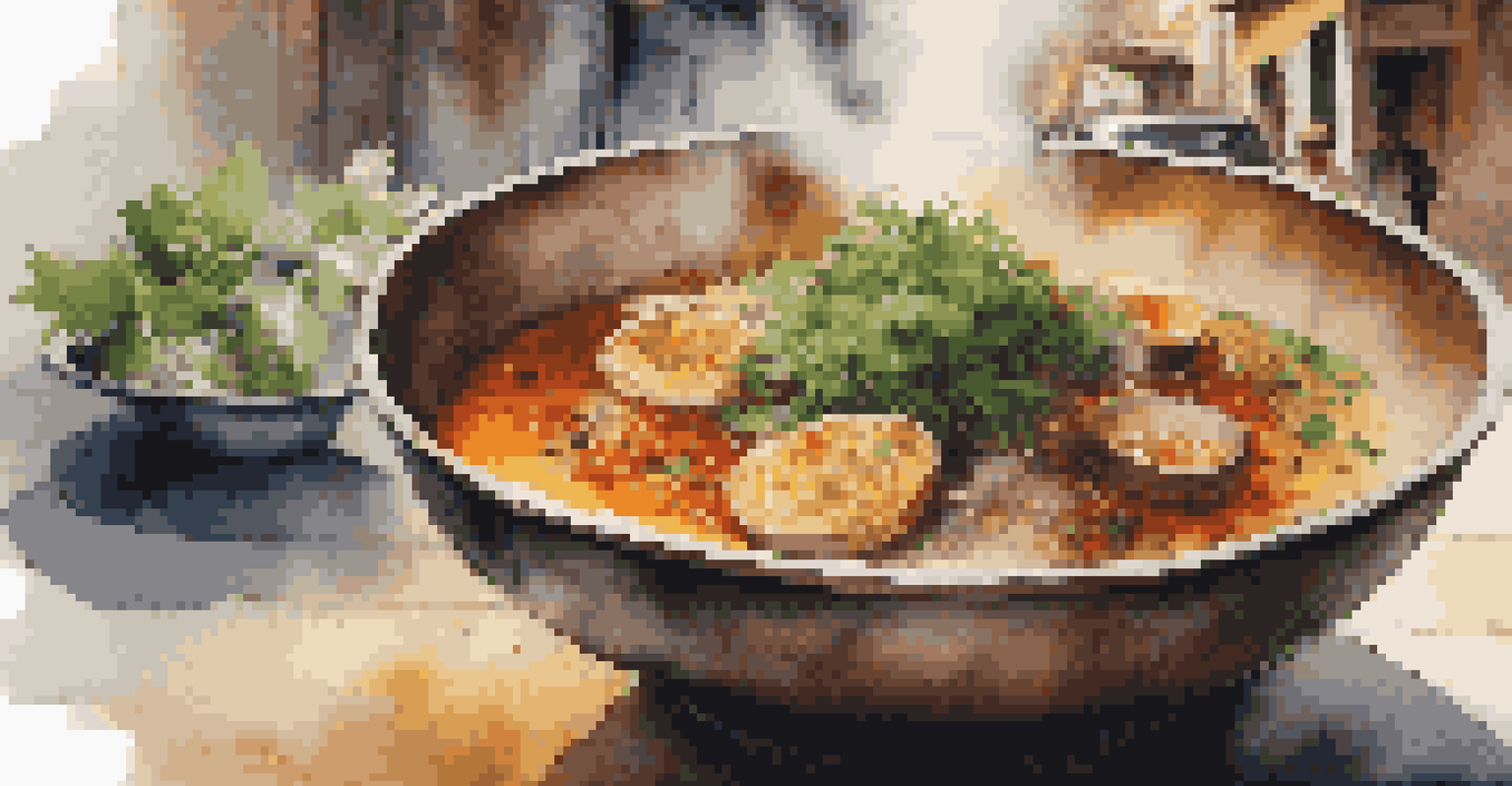Solo Travel Photography: Tips for Capturing Your Journey

Embrace the Freedom of Solo Travel Photography
Traveling solo means you get to explore at your own pace and capture moments that truly resonate with you. Without the pressure of coordinating with others, you can focus on what inspires you the most. This freedom allows for spontaneous photography opportunities that might otherwise be missed.
Traveling – it leaves you speechless, then turns you into a storyteller.
Imagine wandering through a bustling market or a serene landscape, where the light shifts and the colors come alive. Solo travel encourages you to take your time, observe details, and reflect on your surroundings, enhancing the photography experience. You can capture those fleeting moments that tell your unique story.
Moreover, being alone can help you connect more deeply with your subjects, whether they're people, landscapes, or cultural nuances. The ability to engage authentically with your environment can lead to stunning photos that reflect your personal journey.
Choose the Right Gear for Your Adventure
Selecting the right photography gear is crucial for solo travelers. You want equipment that is lightweight, portable, and versatile, allowing you to capture a variety of scenes without being weighed down. A good camera and a couple of lenses or a high-quality smartphone can be all you need to start.

Consider investing in a sturdy yet compact tripod for those breathtaking sunset shots or long exposures. Additionally, a camera bag that can easily transition from day to night will keep your gear safe and accessible. Remember, the best gear is the one that suits your style and enhances your creativity.
Enjoy Freedom in Solo Photography
Traveling alone allows you to explore and capture moments at your own pace, enhancing your photography experience.
Lastly, don’t forget about backup options! Extra batteries, memory cards, and a portable charger can save you from missing that perfect shot due to technical difficulties. Being prepared ensures you're always ready to capture the moment.
Master the Art of Composition
Composition is the backbone of great photography. Familiarize yourself with techniques like the rule of thirds, leading lines, and framing to create visually appealing images. These principles guide the viewer's eye and help convey the emotions you wish to capture.
The camera is an instrument that teaches people how to see without a camera.
For instance, placing your subject off-center can create a sense of balance and interest. Experimenting with angles and perspectives can also yield striking results. Sometimes, getting low to the ground or climbing a bit higher can transform a mundane shot into something extraordinary.
As you practice, remember that composition is ultimately about telling a story. Each photograph should reflect your unique experience, inviting others to see the world through your eyes. So, don’t hesitate to break the rules and find what works best for you.
Utilize Natural Light to Your Advantage
Lighting can make or break a photograph, especially in solo travel scenarios. The best times to shoot are during the golden hours—shortly after sunrise and before sunset—when the light is soft and warm. This natural glow can enhance colors and add a magical touch to your images.
When exploring during midday, try to find shaded areas or interesting shadows to work with. Harsh sunlight can create unflattering contrasts, so look for ways to utilize natural light creatively. Positioning your subject in relation to the light source can lead to stunning results.
Choose Lightweight Photography Gear
Opt for portable and versatile equipment that suits your style, ensuring you're always ready to capture the perfect shot.
Don't shy away from experimenting with different lighting conditions, such as capturing the vibrant hues of a city at dusk or the serene ambiance of an early morning. Each situation offers a unique opportunity to showcase your creativity and perspective.
Connect with Local Culture Through Photography
Solo travel offers a unique chance to immerse yourself in local culture, and photography is an excellent medium for this connection. Engage with locals, attend cultural events, and explore traditional markets to capture authentic moments. These experiences can deepen your understanding of the place you're visiting.
When photographing people, always ask for permission first. This simple act of respect can lead to more genuine interactions and stunning portraits. Building rapport with your subjects can result in photographs that reflect the true spirit of the community.
Additionally, documenting local customs, food, and daily life can create a rich narrative of your journey. These photos will not only serve as beautiful memories but also as a visual diary that tells the story of your travels.
Edit Wisely: Enhance Your Travel Photos
Editing is where the magic happens! Post-processing can elevate your travel photos, making them pop and reflecting your unique style. Use editing software or mobile apps to adjust lighting, contrast, and color balance, enhancing the visual impact of your images.
However, it’s essential to strike a balance. Over-editing can lead to unnatural results, so aim for a subtle touch that enhances your photo while preserving its essence. Think of editing as polishing a gem, bringing out its brilliance without overshadowing its natural beauty.
Tell Your Story Through Images
Each photo should reflect your unique experiences and emotions, creating a cohesive narrative of your travels.
Experiment with different editing techniques, such as adding filters or cropping for better composition. Ultimately, your goal should be to present a true representation of your experience while showcasing your artistic vision.
Document Your Journey with a Visual Story
As you travel solo, think of your photography as a narrative that tells your unique story. Each photo should capture not just a place but the emotions and experiences tied to it. This approach will help you create a cohesive collection of images that resonate with others.
Consider themes or a specific focus for your journey. Whether it's capturing the essence of nature, street life, or cultural landmarks, having a narrative in mind can guide your photography. This intentionality can lead to a more meaningful body of work that reflects your personal journey.

Additionally, sharing your photos on social media or a travel blog can inspire others and invite them into your world. By curating your images thoughtfully, you can create an engaging visual story that encourages others to explore and appreciate different cultures.